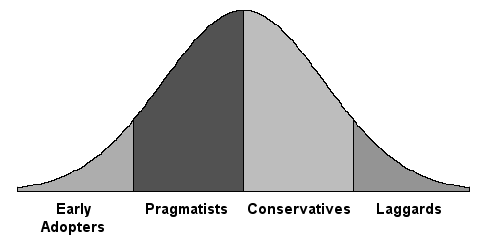
|
MVNOs typically target specific demographic profiles. For example, Amp'd and Helio both target young people, Mobile ESPN targets sports fan, and Disney Mobile targets kids and their families.
Targeting a specific demographic profile enables focus, but not without risks. Focus vs. specialization is a tough question. Focus is always good. Specialization may or may not.
Specific demographic sets typically have their own
adoption curve…
As I look at the different MVNO, I see that one of the challenges ahead of them
is how to deal with multiple demographics or a demographic profile within another demographic
profile… Let me explain.
In today's landscape, MVNOs target 1) early technology adopters who
also, 2) fall under another demographic profile. An example is Mobile ESPN,
whose target audience are early adopters who also are hard-core sports fan. To
succeed, the MVNO must have domain expertise in all the targeted demographic
profiles. Another concern related to demographic specialization is that MVNOs may also have non-compete clauses with the network operators that will
restrict the MVNO in the case of a change in strategy and/or change in target demographics…
(Are users of advanced mobile services (still) considered early adopters?
Yes, I think so. By advanced mobile services I mean services besides text and MMS messaging, ringtones and wallpapers, services such as access to the web, IM, video calls, location, and so on.)
The "early adopters" phase is defined to be temporal. But for how long will this phase last (for advanced mobile services)?
I am not sure — but
crossing the chasm has taken years, and will take more years. Entering this
highly competitive landscape is a long-term investment effort, that requires deep pockets to stick around, to survive.
ceo